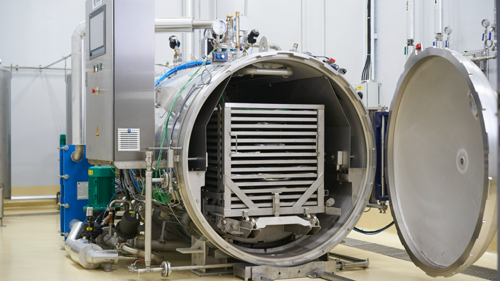
Preserving Freshness: The Science Behind Retort Technology
SHARE THIS ARTICLE
Thermal processing, invented in the 18th century by Nicholas Appert, is a reliable method for extending the shelf life of food without preservatives.

Thermal processing is a method used to preserve food by heating it to a specific temperature for a specific amount of time to kill harmful microorganisms and enzymes that can cause spoilage or health risks.
Thermal processing is a safe and cost-effective method of preserving food that helps maintain its quality and freshness for longer periods of time. It has grown in popularity due to the increasing demand for high-quality, long-lasting food with delicious flavors and aromas.
What is Retort Processing?
Retort processing is a method of thermal processing preserving pre-cooked foods by placing them in pouches, sealing them, and heating them up to 120°C under high pressure in a retort machine. This eliminates micro organisms and contaminants, extending the shelf life of the food for up to 2 years.
The Science Behind Retort Processing
Microbial dynamics studies how bacteria respond to heat, while Thermal Death Time (TDT) indicates the time and temperature needed to kill these organisms. Retort processing uses precise adjustments of these factors to make food safe, nutritious, and tasty.
Retort processing is a method of thermal processing preserving pre-cooked foods by placing them in pouches, sealing them, and heating them up to 120°C under high pressure in a retort machine. This eliminates micro organisms and contaminants, extending the shelf life of the food for up to 2 years.
The Science Behind Retort Processing
Microbial dynamics studies how bacteria respond to heat, while Thermal Death Time (TDT) indicates the time and temperature needed to kill these organisms. Retort processing uses precise adjustments of these factors to make food safe, nutritious, and tasty.
Advantages of Retort Process
- Extending Shelf Life
- Retort technology can make food last longer without the need for preservatives or refrigeration, keeping it fresh for months or even years.
- Food Safety
- This technology uses high temperatures to kill bacteria and microorganisms in food, ensuring it is safe for consumption.
- Preservation of Nutrients and Flavour
- Modern retorts have advanced control systems that monitor temperature and pressure to ensure nutrients are retained and food tastes great.
Read further technical information by Jimenez, P. S., Bangar, S. P., Suffern,M., & Whiteside, Department of Food, Nutrition and Packaging Sciences, Clemson University,Clemson, South Carolina, USA. W. S. (2024). Understanding retort processing: A review. Food Science & Nutrition, 12, 1545–1563. https://doi.org/10.1002/fsn3.3912.
